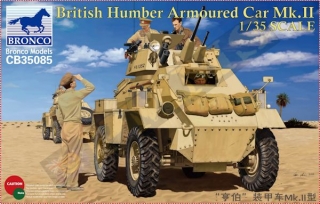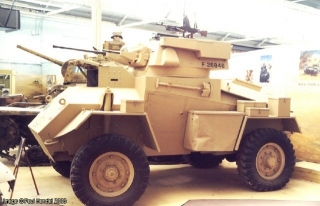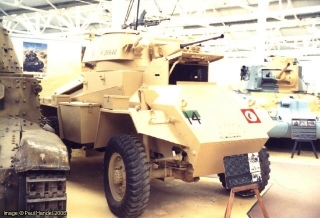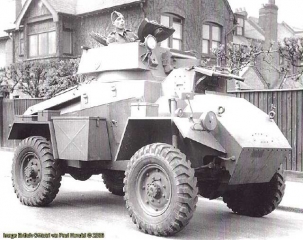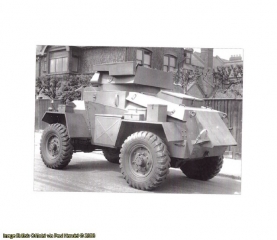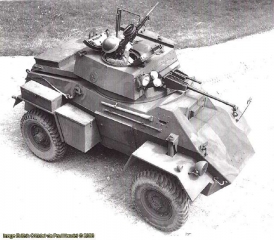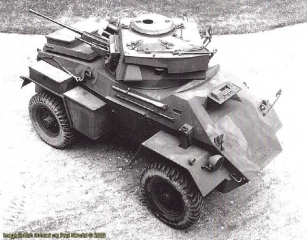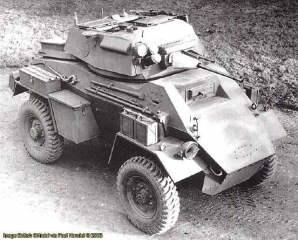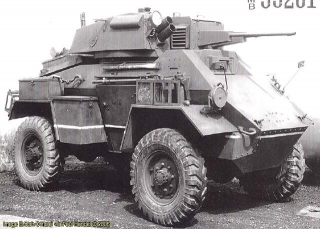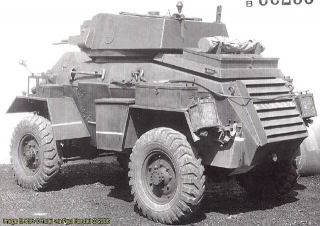With the announcement of the Bronco CB35085 British Humber Armoured Car Mk.II, it’s timely to have another look at a reference we posted some time ago on the Humber Armoured Car family. The Humber Armoured Car was developed from the Guy Motors Ltd “Wheeled Tank Mark 1”, which first saw production in 1939. Guy Motors subsequently had a large commitment to supply trucks and gun tractors to the British Army, and could not keep up production of their armoured cars.
The UK Rootes Group took over the reins of the armoured car production, and using the chassis of their pre-war Karrier KT4 artillery tractor as the basis, started production of the Humber Armoured Car in 1940. The artillery tractor chassis was modified by moving the engine, a six cylinder in-line petrol engine developing 90 bhp, to the rear and installing the Guy Armoured Car hull with turret mounting a 15mm gun and 7.92m Besa machine gun. The Guy hull was the first fully welded hull of an AFV to go into production for the British Army.
The Guy hull had a distinctive raised portion at the front for the driver’s hatch, and this was characteristic of the Humber Mark 1, as preserved in The Tank Museum at Bovington (refer images below).
Subsequent marks of Humber had the driver’s hatch recessed into the front plate. A larger turret was introduced with the Humber Mark III, with the crew increased to four.
The last version, the Humber Mark IV, mounted a US designed 37mm gun in lieu of the 15mm Besa. This reduced the crew to three men. A Bren Light Machine Gun could be mounted on top of the turret using the Lakeman mounting.
Humbers entered service in the British Army in the United Kingdom in June 1941 and in the Middle East in September of that year. About 5400 of all types of Humber Armoured Cars were produced. A Canadian built version, the Fox, was built using a General Motors 4×4 chassis. The hull and turret were similar to the Humber, although the armament comprised one 0.50 inch and one 0.30 inch Browning Machine Gun. Only about 200 of these were built.
The Humbers saw extensive service with reconnaissance units of both armoured and infantry divisions in the Middle East. For the war in Europe, the Daimler was the preferred armoured car, although Humbers were liked for command purposes as they had a roomier hull. Both types were criticized for their lack of engine power, and the Humber had a short engine life of around 3000 miles.
Photographed at: The Tank Museum, Bovington. Photo Series and text © Paul Handel 2006.
Images – Click on thumbnails below for larger images. Images © Paul Handel 2006
The images below are from British Official sources via Paul Handel and show the difference between Marks I, II and III:
Humber Mk I
Humber Mk II
Humber Mk III
Please note that the first image is of a “straight” Mark III, while the last two are of a “rear link” vehicle based on the Mark III chassis. A “rear link” vehicle provided radio links between forward units and higher command.

